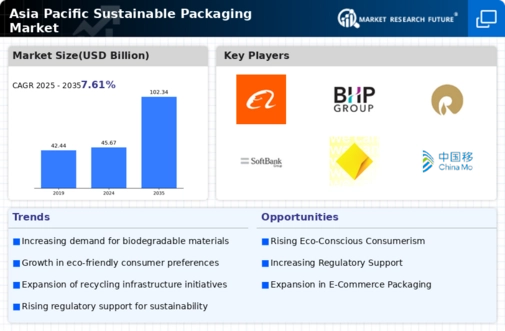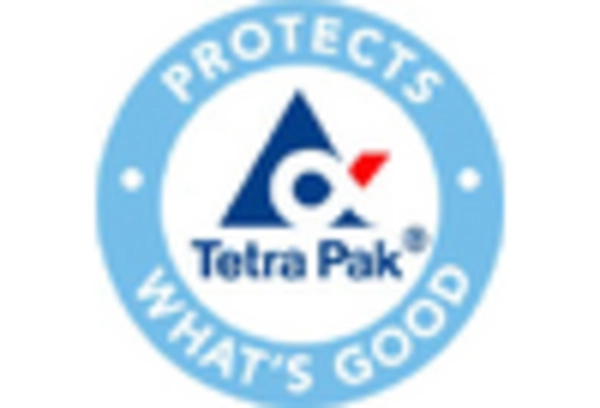Market Analysis
In-depth Analysis of Asia Pacific Sustainable Packaging Market Industry Landscape
The Asia Pacific Sustainable Packaging Market is experiencing dynamic changes due to a combination of environmental consciousness, regulatory initiatives, and shifting consumer preferences. As market dynamics show a shift towards sustainable packaging solutions in response to growing awareness of environmental impact from conventional packaging materials. Governments across Asia Pacific are focusing on measures and regulations that will stop the use of single-use plastics and promote eco-friendly alternatives. Thus, this driver creates conditions for the development and wider acceptance of sustainable packaging solutions thus influencing market dynamics.
Consumer tastes drive market dynamics in sustainable packaging within the Asia-Pacific region. Growing ecological sensibilities amongst consumers have led to rising demand for products that packaged in recyclable, biodegradable materials made out of renewable resources. Manufacturers as well as retailers therefore change their ways by using ecofriendly packing options; hence leading into subsequent shifts regarding market trends for adoption and growth environmentally friendly packing solutions.
Moreover, corporate sustainability goals shape up the market dynamics of sustainable packaging within the Asia Pacific region. Many companies now know that they need to keep their business environment clean because it is important for them to reduce their ecological footprints This commitment influences supply chain decisions such as choice of packaging materials Companies leaning towards environmentally friendly alternatives can significantly alter market forces.
With technological advancements taking place through innovations’ several possibilities and applications are created due to introduction of substances that are considered safe for sustainability packages development process including environmentally friendly materials used in developing countries. The evolution on bio-based plastics, compostable materials as well as advanced recycling technologies contributes towards development of Asia Pacific Sustainable Packaging Market These efforts address concerns on performance improvements, cost effectiveness or scalability thereby shaping marketing trends so far, they have opened new spaces where different industries could apply similar concepts
Different countries throughout APAC have various levels of sustainable packaging strategies which result into changes within its structure given the diversity in its economic landscape Developed economies generally adopt and embrace sustainability practices ahead while emerging ones begin recognizing its significance within their growth paths through adopting principles related with green packaging. These differences influence market dynamics leading to a fragmented environment where opportunities and challenges compete within the Asia Pacific Sustainable Packaging Market.
In addition, partnerships along the packaging value chain and collaborations among stakeholder’s shape market developments since they drive acceptance of green packing solutions through various forms of innovations. Furthermore, collaboration between packaging manufacturers, brands, retailers as well as waste management can lead into a more comprehensive approach that is sustainable than other approaches. They solve infrastructure problem related issues, consumer awareness campaigns or enabling technologies in this respect; thus, shaping market forces of sustainability packaging within APAC region.
The dynamics in terms of regulations cannot be standardized either due to lack of infrastructure development or customer understanding constraining the processes. It remains difficult to develop uniform guidelines that will govern sustainable packaging throughout Asia-Pacific region while regulations evolve. For effective implementation of sustainable packaging alternatives, proper infrastructure like efficient recycling systems and composting facilities should be put in place. Also, consumers need to know about benefits and how to dispose them off properly so that they may appreciate this new concept.

















Leave a Comment